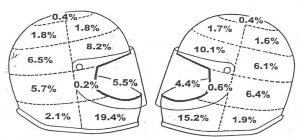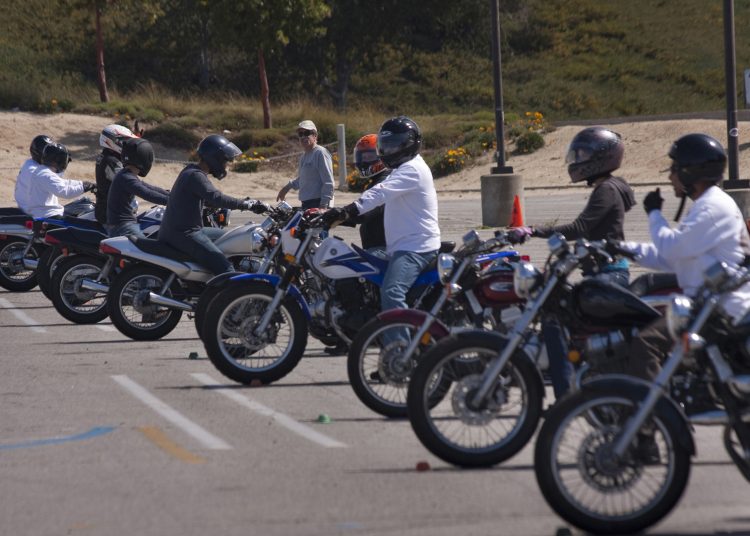If there were a subtitle to this post, it might be “…and then proceed to ignore the answers.”
I’ve been riding motorcycles for a long time and have logged lots of street and racetrack miles. I’ve recently added dirt bikes to the mix. A part of my identity is tied up in motorcycling. Periodically, someone with an interest in starting to ride will ask me for advice, which I happily give. I want others to experience the joy of the sport. I also want them to come through the experienced unscathed. According to Insurance Journal, the first year of riding is the highest risk time for crashes, with the first 30 days being the very highest rate.
Here are a few questions I get asked, and my responses:
1. Will you give me some advice on motorcycling?
Yes, of course I will. I can talk about bikes forever. I also understand that you’re likely to ignore my advice when you hear different advice you like better, particularly about appropriate beginner bikes and what gear you should wear.
2. What bike should I buy?
What do you want in a bike? Are you a laid-back cruiser person, or a wanna-be track junkie? Are you trying to look cruiser-cool, retro-cool, or do you not care? Street, dirt, or both? Do you just want to get around efficiently? Answering these questions will point you towards a category – cruiser, standard, dual-sport, dirt, sportbike, retro, touring. Don’t sweat it if you don’t see all these categories on dealer or manufacturer websites.
Once you’ve figured that out, figure out a budget. Your budget should include motorcycle-specific full-face helmet, jacket, gloves, pants, and boots.
Now do the fun part. Go shopping! Find the smaller bikes in your chosen category. Remember, this is your first bike, not your last. Some guidelines by category:
- Cruisers/retro: 750cc max. Cruisers run big, but there are cruisers in displacements from 250cc-650cc.
- Standards: 500cc max.
- Dual-sport: 250cc max.
- Touring bikes: nope. Touring bikes aren’t built for new riders. They tend to be large and heavy with lots of displacement.
- Dirtbike: 150cc 4-stroke, unless you’re Andre the Giant.
- Sportbike: 300cc max.
3. What should I look for in buying a bike?
There are so many nice, low-mileage used motorcycles out there! Buy the nicest, lowest-mileage machine you can afford. Be aware that low miles for a car can be high for a bike. I generally look for no more than 3,000 miles per year. If it’s been sitting more than 6-9 months, be wary. Rubber parts dry out, and gas and oil go bad.
4. Is there an age limit on what I should look for?
Stay in the modern era, so probably nothing older than about 15 years for your first bike. I’ve seen 15-year-old, low-mileage machines that would be excellent buys. Remember, however, that the older the bike, the harder to find someone to work on it and to find parts for it. Many dealers won’t touch anything more than 10 years old, particularly in the sportbike category, and good independent shops can be hard to find.
5. Is there a mileage limit on what I should look for?
It depends on maintenance, but if you take the time to look, you’re likely to find low-mileage examples of whatever you want. I look for less than 3,000 miles per year. So for a 3-year-old bike, no more than about 9,000 miles.
6. Should I buy a new (as opposed to used) bike?
No. Buy used. Get some experience first. Get something nicer later.
7. Dealer or private sale?
You tend to find better deals from private sales, but don’t ignore your friendly local dealer. Many dealers will have last year’s model or even a 2-year-old leftover sitting in the showroom waiting for someone to get a killer deal. With that said, ask around your local motorcycle community, because some dealers suck.
8. Will you look at some ads for me?
Yes, but please understand when I get frustrated with you and say unkind things when you completely ignore my advice about buying a smaller machine. This can turn a benevolent mentor into a bitter, nasty old man.
9. Will you look at a bike for me?
Yes, but only if I think it’s a good beginner bike. If you ask me to look at a Hayabusa, I’m not going.
10. How do I go about getting my license?
Take the Motorcycle Safety Foundation (MSF) Basic Rider Course (BRC). (If you’re riding dirt only, you don’t need a license, but I recommend MSF’s dirtbike school, too.) In Georgia and many other states, you can take this class, hand your completion certificate to the Department of Driver Services, and they’ll hand you a license. Nothing simpler. If you don’t go that route, you have to go through both a written and riding test. Also, if you ask me for advice and don’t take the BRC, I’m probably not going to be very nice to you.
11. Should I buy a bike first, or take the class?
Take the class. MSF provides motorcycles. You may decide after the class that motorcycling isn’t for you, or you might fail. Presuming you pass, when you buy your bike, you’ll be ready to ride. You can ride it home from purchasing it. If you don’t own a truck or trailer, this is a great thing.
12. Can I carry a passenger?
I suggest waiting a year before you accept responsibility for another person’s well-being. You’ve chosen to accept the risk of riding a motorcycle without significant experience. You should not expose others to that risk, even if they’re willing. Very few non-riders understand the real risks of motorcycling.
If you do choose to make this mistake, make sure you have full gear that fits your passenger. That means helmet, jacket, gloves, pants, and boots.
13. Rider X says Y, which is contrary to what you said. Who should I listen to?
You should listen to me, but you’re likely to listen to the person who says what you want to hear. Usually what you want to hear is wrong. A few examples:
- “As long as you respect the bike, you can handle anything you want.” This may be true for some people. There are folks who started on a ZX-14 and lived to tell about it. Those people are more lucky than smart. Buy small. Remember this is your first bike, not your last bike.
- “Jeans are fine.” Jeans aren’t built to be abrasion resistant at speed. Road rash hurts. Road rash with dirt in it hurts a lot. Scars aren’t sexy. Skin grafts are not fun. Plus, if you slide on your ass, you’ve eliminated the most likely area to get skin graft donations from.
- “All that gear is too hot.” I’d rather be hot than hospitalized. There are plenty of gear options to keep comfortable in all but the most extreme conditions, and it doesn’t have to be expensive. Cycle Gear carries a line of inexpensive gear that will do the job, and many manufacturers are seeing the benefit to providing good functional gear at a price point.
- “You don’t need a full-face helmet.” Some folks tend to think a full-face lid doesn’t look cool. Looking cool isn’t the point. It’s about saving your chin from hitting the pavement and breaking your jaw while having your face ground off by the asphalt. A helmet study done by Dietmar Otte of Hannover Medical University shows 35% of crashes have major impact in the chin bar area. Check out the diagram from that study below.
 If you’re considering one of those pudding bowls that a lot of cruiser riders like, you’re covering only 36% of likely impact injury to your head. So in order to look cool, you’ve given up 64% of a helmet’s effectiveness.
If you’re considering one of those pudding bowls that a lot of cruiser riders like, you’re covering only 36% of likely impact injury to your head. So in order to look cool, you’ve given up 64% of a helmet’s effectiveness.
I wanna hear from you!
Non-motorcyclists or beginning riders, I would love to hear your questions in the comments section. Experienced riders, I would also love to hear what you hear from beginners. I’m planning to revise/expand this post with your input.
